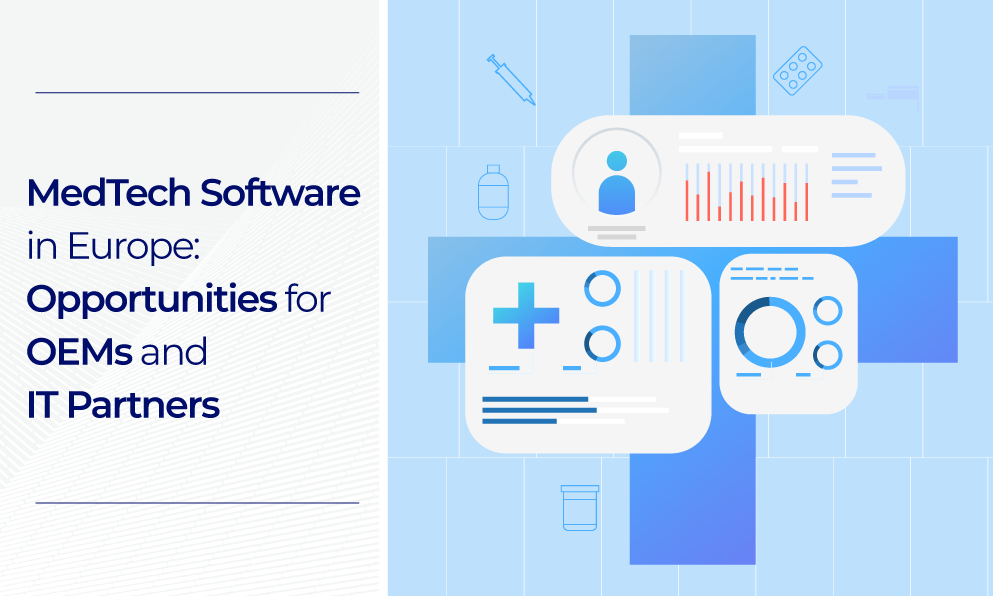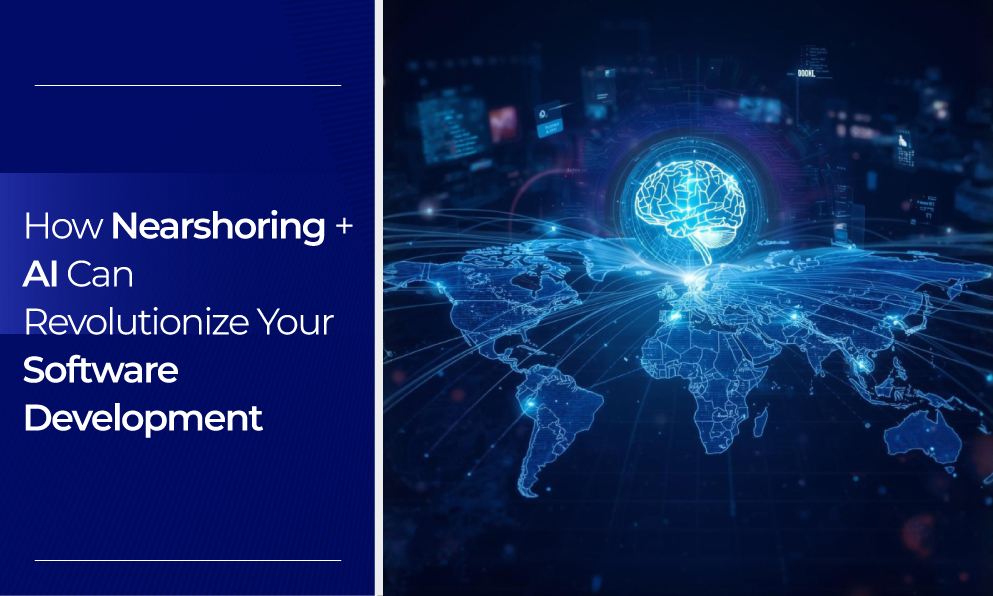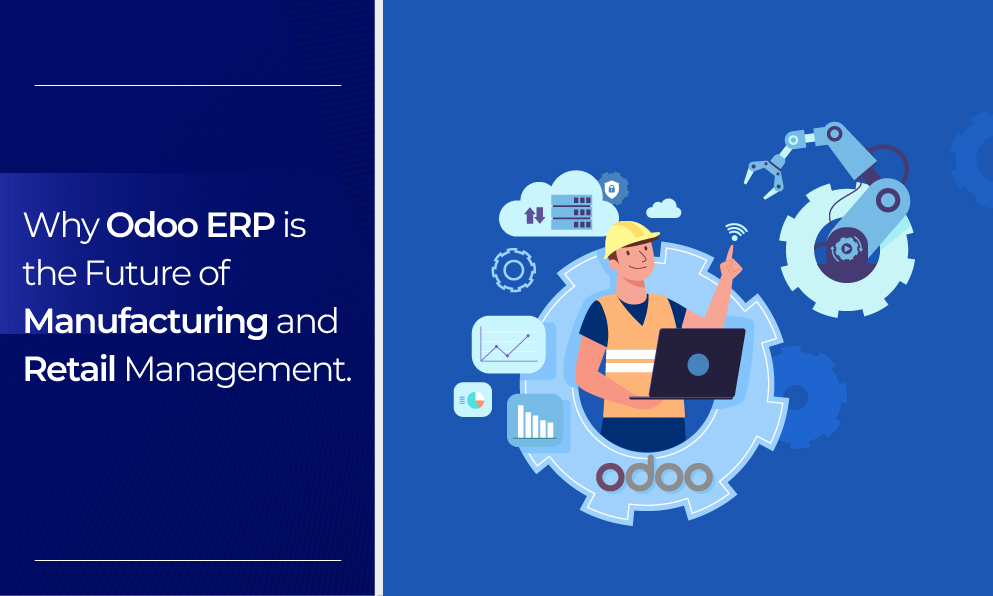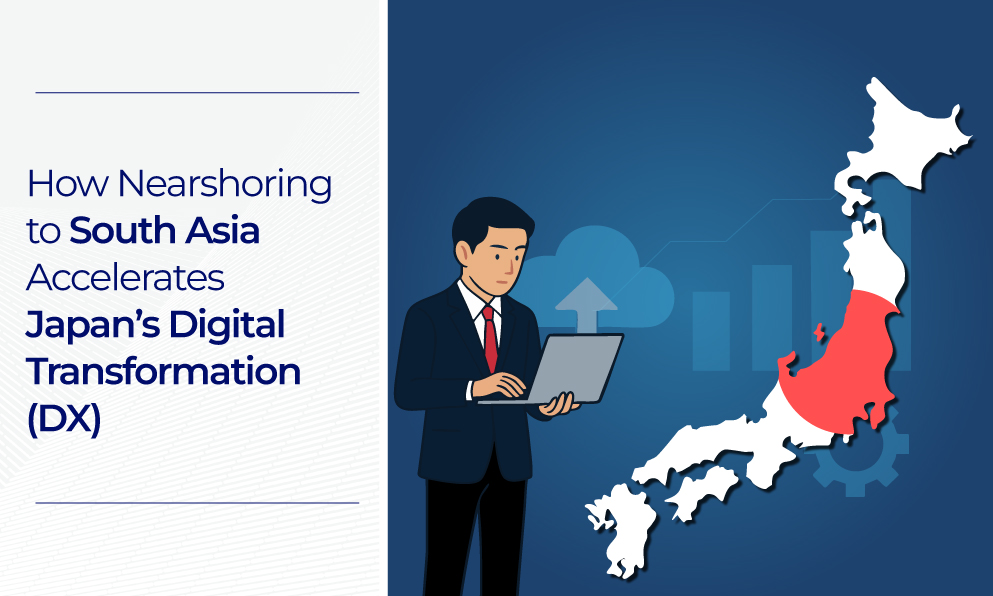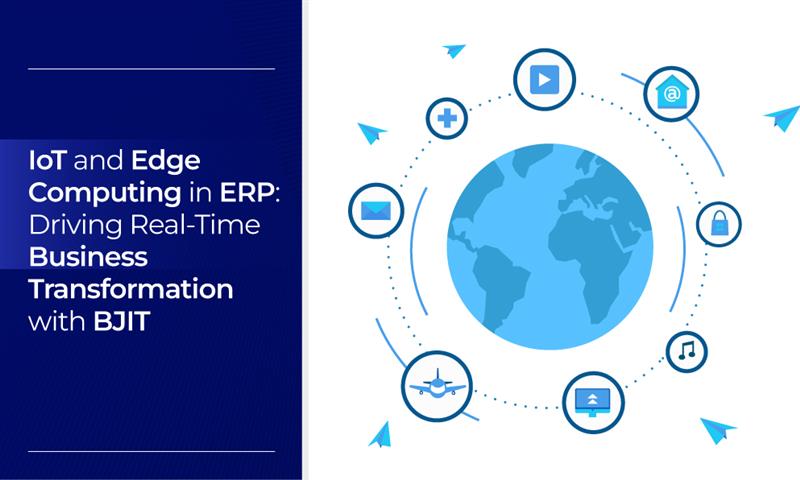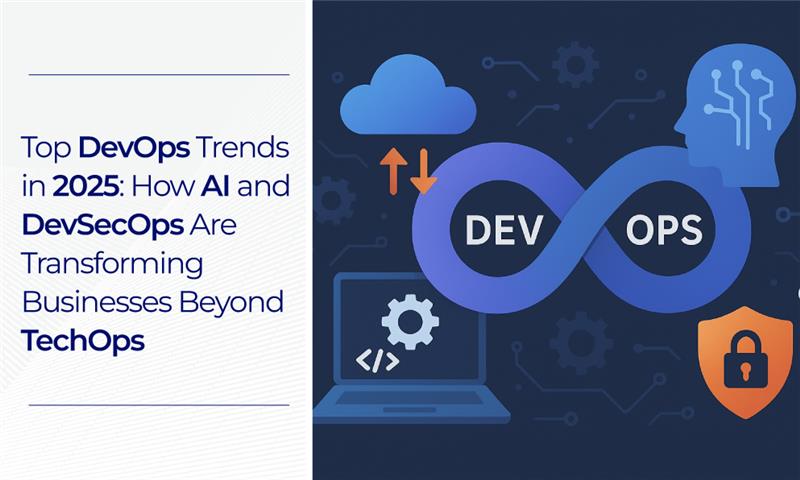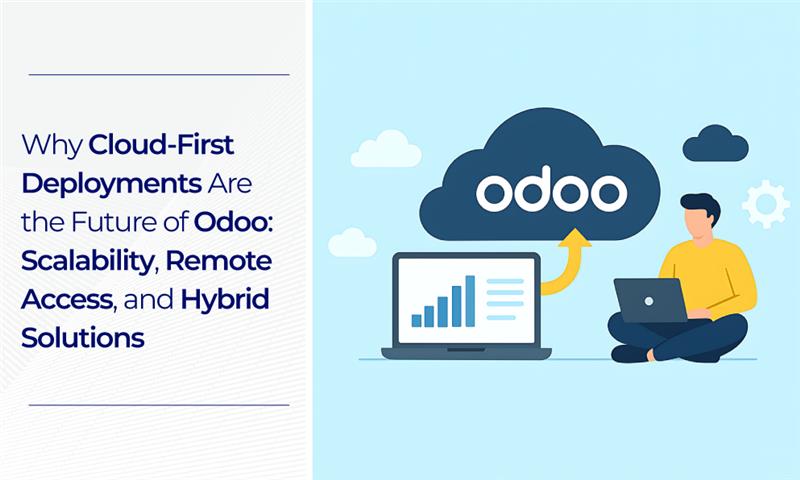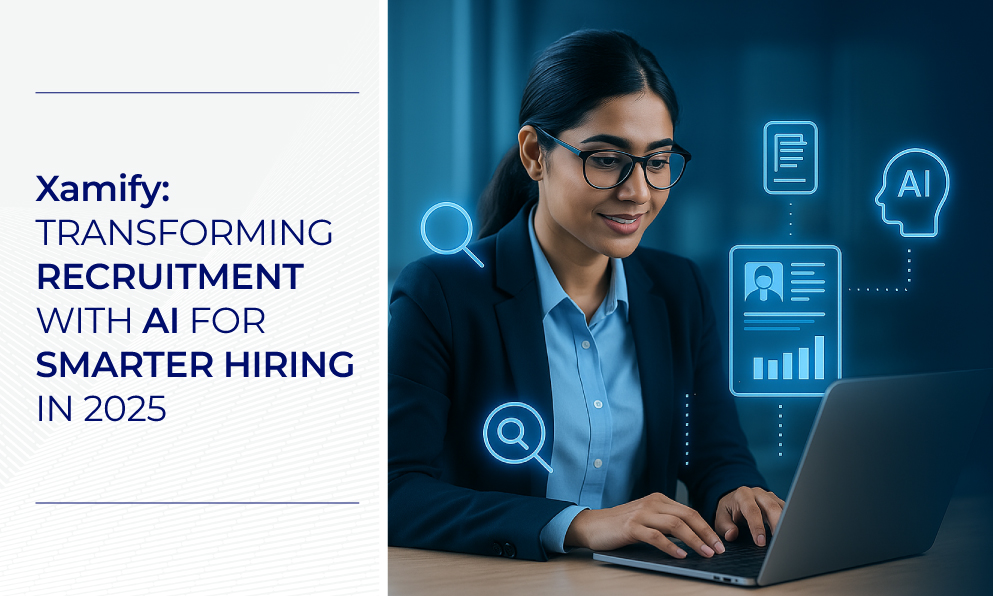Introduction
In today’s digital-first economy, the race to "innovate or stagnate" has never been more intense. Businesses are trapped in a triangle of competing demands: build faster, reduce costs, and improve quality. For decades, traditional offshoring was pitched as the solution, but it often traded cost savings for 3 AM update calls, cultural disconnects, and broken project handoffs.
Today, two powerful forces—one strategic, one technical—are converging to create a new, superior model.
- Nearshoring: The geographic solution that solves collaboration and time-zone issues.
- Artificial Intelligence: The technical solution that automates low-level tasks and injects predictive insights.
When combined, these two strategies don't just add to each other; they multiply their benefits. This hybrid approach redefines how enterprises plan, build, and scale software. It’s a model that accelerates development, elevates quality, and delivers a strategic advantage that siloed teams cannot match.
As a global technology leader, BJIT has pioneered this hybrid model, using nearshore excellence and intelligent automation to revolutionize software development for our clients in ERP, Salesforce, AI, and Odoo.
Discover how BJIT's proven AI + Nearshore model can accelerate your specific project.
Nearshoring: The Strategic Choice for Agile Collaboration
The old offshoring model is breaking down. Businesses in high-cost regions face a severe tech talent shortage—in Germany alone, 82% of employers report struggling to find qualified IT candidates (Scalo, 2025). This talent gap creates bottlenecks, delays innovation, and inflates costs.
Nearshoring, the practice of outsourcing to a geographically and culturally close country, is the direct answer. Instead of a 12-hour time difference, you have a 2-5 hour overlap. This model provides access to deep talent pools at a fraction of the cost—often 30-50% less than local markets—without sacrificing real-time collaboration.
Key Benefits of Nearshoring (vs. Offshoring):
BJIT’s nearshore delivery centers in Bangladesh, Japan, and Europe are built on this principle, providing a seamless, round-the-clock extension of your home team.
AI: The Software Development Multiplier
If nearshoring streamlines how teams work together, AI transforms what they work on. Artificial Intelligence is moving beyond coding assistants to inject predictive and generative power into every single phase of the software development lifecycle (SDLC).
AI-Driven Innovations Throughout the SDLC:
- Intelligent Requirements & Design: Before a line of code is written, AI uses Natural Language Processing (NLP) to analyze requirements, identify ambiguities, and ensure user stories are complete. It can even generate high-fidelity UI/UX mockups from simple text prompts.
- Supercharged Coding & Review: AI tools like GitHub Copilot are just the start. Modern AI-driven linters and review tools (like Amazon CodeGuru) can analyze pull requests for complex logical errors, security vulnerabilities, and non-compliance with best practices—acting as an expert senior developer on every review.
- Generative & Self-Healing QA: This is a revolution for quality. Instead of writing tests, Generative AI (using platforms like Testsigma or TestRigor) creates comprehensive test suites directly from requirements. Self-healing scripts automatically adapt to UI changes, eliminating the "brittle test" problem and saving thousands of hours in QA maintenance.
- Predictive Project Management: AI can analyze your team's historical sprint data to accurately forecast delivery dates and identify bottlenecks before they happen. It can flag an overburdened developer or a high-risk module, allowing managers to proactively reallocate resources.
- Proactive AIOps & DevOps: In production, AI-driven operations (AIOps) monitor logs and performance data, distinguishing real threats from "alert noise." It can perform automated root cause analysis, predicting a potential outage and triggering a response before it ever impacts a user.
The Nearshore + AI Synergy
Fusing a nearshore team structure with an AI-powered toolset creates a hyper-productive ecosystem. This strategic combination yields transformative results that are unattainable through either approach in isolation. The following scenarios illustrate the practical impact of this synergy:
1. Eliminating Handoff Delays
- Traditional Offshore Model (Without AI): A European or US-based team concludes its workday and transmits an asynchronous, text-heavy handoff to an offshore team operating on a disparate (e.g., 12-hour) time difference. This temporal gap frequently results in significant project delays pending clarification.
- Nearshore + AI Model: A European team concludes its operations. The corresponding BJIT nearshore team in Bangladesh commences its workday, benefiting from a substantial (e.g., 4-hour) time-zone overlap. This team receives an AI-generated digest detailing all recent commits, flagged pull requests, and a reprioritized task queue. Consequently, the synchronous overlap period is allocated to high-value strategic alignment rather than simple status reporting.
2. Evolving from 'Code Factory' to 'Innovation Partner'
- Traditional Outsourcing (Without AI): The vendor relationship is often transactional, functioning as a "code factory" that receives directives and delivers the corresponding code.
- Nearshore + AI Model: Artificial intelligence automates low-level, repetitive tasks (such as unit test generation and boilerplate code). This automation liberates the expert nearshore team to concentrate on high-complexity, high-value problem-solving. Leveraging AI-driven analytics, the team can proactively recommend architectural refactoring, identify performance bottlenecks, and contribute substantively to the product roadmap. The partner thus transitions from a simple implementer to a strategic co-creator.
3. Achieving Accelerated Quality Assurance Cycles
- Traditional QA (Without AI): The quality assurance process is often a multi-day bottleneck, commonly requiring distinct phases for build, testing, and subsequent remediation—a notably protracted cycle.
- Nearshore + AI Model: This model facilitates a compressed, 12-hour QA cycle. AI-generated test suites execute overnight. The nearshore QA team analyzes the comprehensive results immediately upon starting their workday, while the local team is still offline. By the time the local project manager begins their day, defects have already been identified, verified, and prioritized. This parallel, AI-augmented workflow can compress the entire quality assurance and release cycle by 50% or more.
A Practical Framework for Implementing Nearshoring + AI
Transitioning to this model requires a strategic partner with a proven process.
BJIT’s Nearshore + AI delivery model integrates these steps seamlessly, helping clients in Europe, North America, and Japan accelerate digital transformation with measurable results.
Schedule a consultation with our experts to see how this framework can be tailored to your business.
Proof, Not Promises: The BJIT Nearshore + AI Model in Action
These performance metrics from public-facing case studies and client reviews demonstrate BJIT’s nearshore engineering model for mission-critical software projects.
Conclusion
The convergence of nearshoring and AI represents the future of global software development. The choice is no longer just where to build your software, but how to build it.
Nearshoring solves the collaboration and cost problem. AI solves the scalability and intelligence problem. Together, they create a development model that is resilient, intelligent, and hyper-efficient.
For organizations seeking a trusted technology partner with proven nearshore delivery and deep AI expertise, BJIT offers a clear path forward.
Accelerate your software innovation. Schedule a consultation with BJIT today.
References
- Vasilescu, B., et al. (2023). The impact of AI pair programming on developer productivity. arXiv preprint arXiv:2302.06590.
- Distillery. (2024). AI + Nearshoring: The next frontier of software innovation. Retrieved from https://distillery.com
- Cresteo. (2025). Best practices for AI development in nearshore environments. Retrieved from https://cresteo.com
- Spiralscout. (2024). 11 Benefits of Nearshore Software Development. Retrieved from https://spiralscout.com
- Eztalks. (2025). Integrating AI in Nearshore Software Development: A 2025 Perspective. Retrieved from https://eztalks.com
- Beecrowd. (2025). The Rise of AI-Augmented Nearshoring. Retrieved from https://beecrowd.com
- Scalo. (2025). The Future of Nearshore Software Development In Europe: Trends and Predictions. Retrieved from https://www.scalosoft.com/blog/the-future-of-nearshore-software-development-in-europe-trends-and-predictions/
